Dear Friends and Well-wishers of Overman Foundation,
The Fourth “Shrimat Anirvan Memorial Oration” organized by Overman Foundation was held on Saturday, 7 July 2017, at Sri Aurobindo Bhavan (8 Shakespeare Sarani, Kolkata 700071).
The programme was chaired by Professor Supriyo Bhattacharya, former Head of the Department of Economics, Kalyani University. Shri Anurag Banerjee, Founder of Overman Foundation, briefly spoke about the life of Shrimat Anirvan.

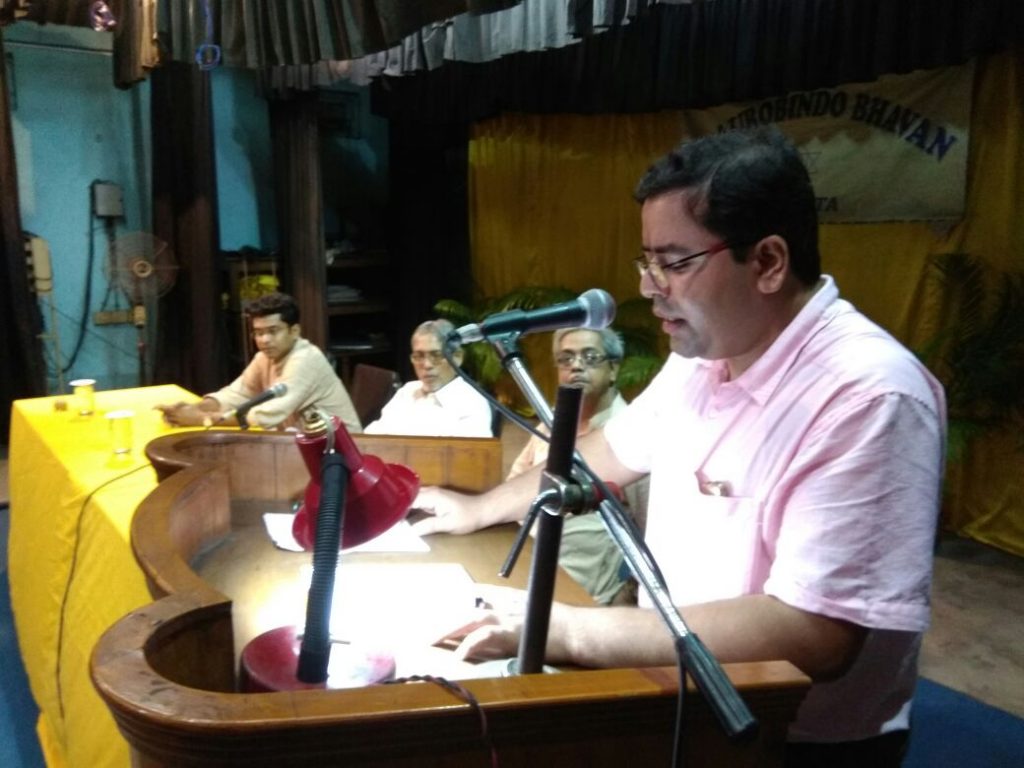
The speaker was Dr. Soumitro Basu, renowned psychiatrist, Editor of NAMAH, one of the founders of Sri Aurobindo International Institute of Integral Health and Research (SAIIHR), Director of Institute of Integral Yoga Psychology (Auroshakti Foundation) and Secretary, Miravision Trust who spoke on the theme : “Shrimat Anirvan on Death.”
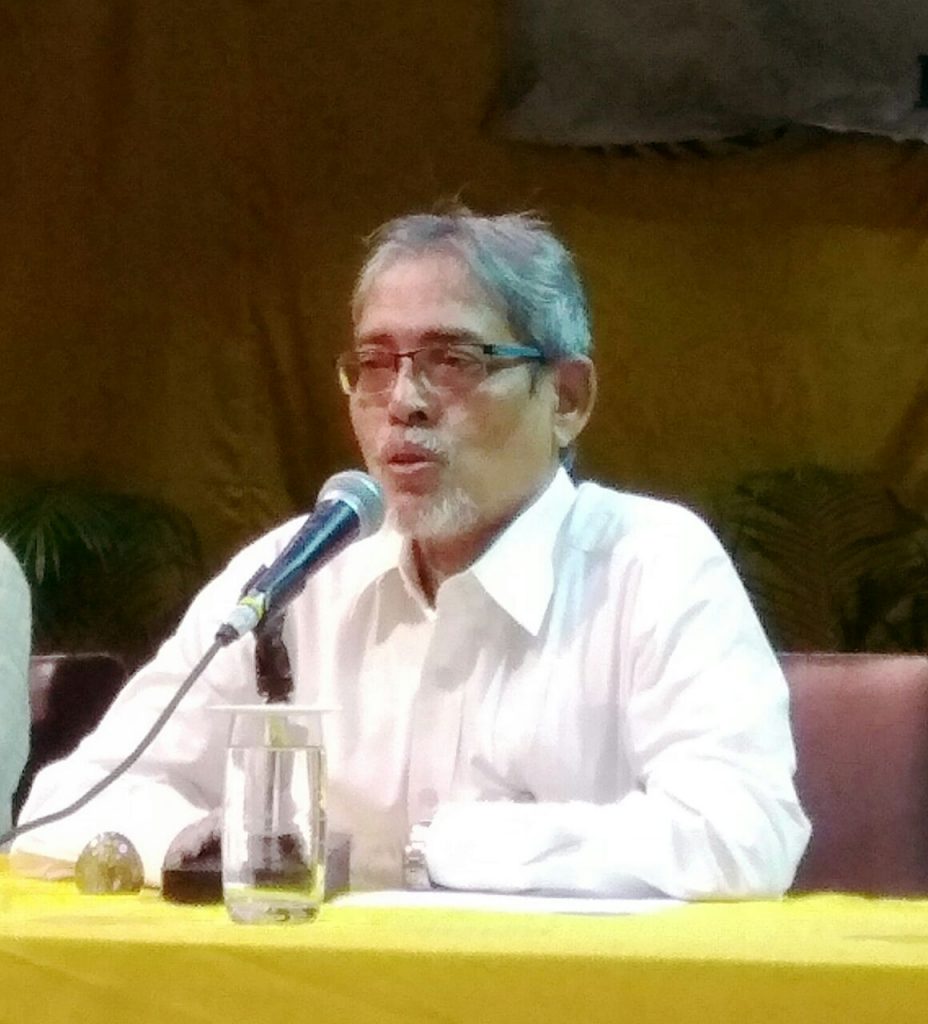
Dr. Soumitro Basu brilliantly portrayed Shrimat Anirvan’s views on Death from the analytical, practical and cosmic perspectives which kept the audience mesmerized throughout the session.


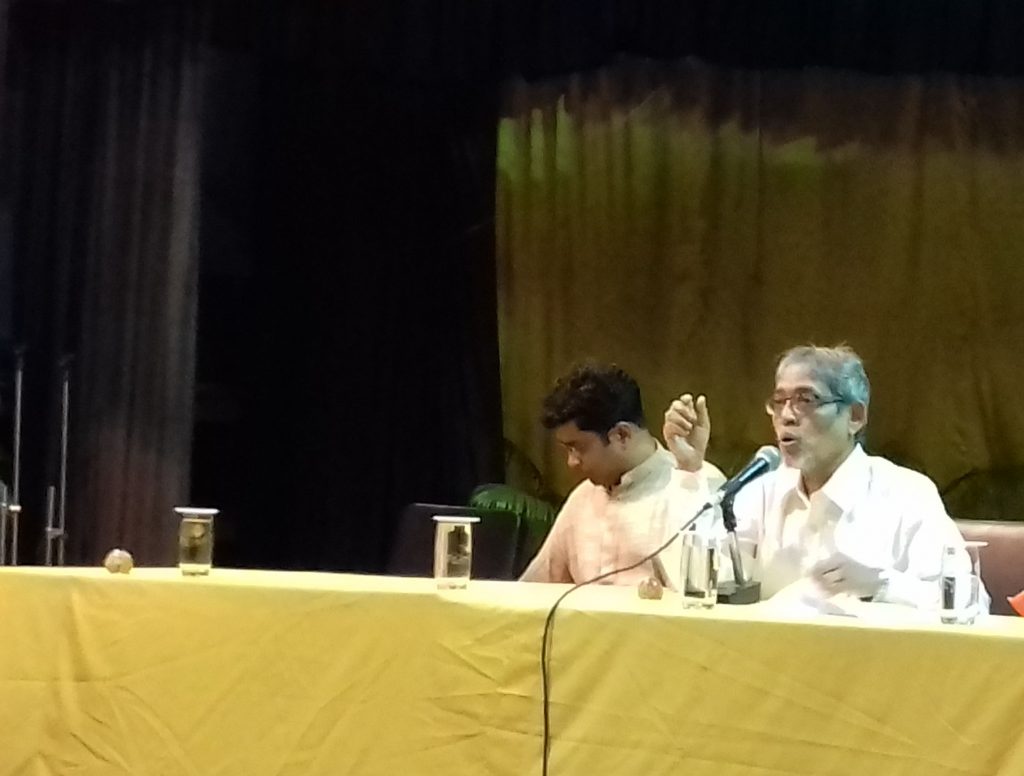

Two books of Shrimat Anirvan were officially released on the 7th of July. The first book was the second and revised edition of his famous book “Letters from a Baul” while the second book titled “Mrityu O Janmantor Prasange” was a new anthology of his writings on Death and Rebirth. Both the books—edited by Ms. Bratati Mukhopadhyay and Shri Sanjoy Biswas and published by Overman Foundation—were released on the occasion by Shri Biswajit Gangopadhyay, noted researcher and Managing Member of Sri Aurobindo Bhavan, Kolkata, who also exhibited, through power-point presentation, a collection of extremely rare photographs of Shrimat Anirvan, especially those of the latter’s last journey.
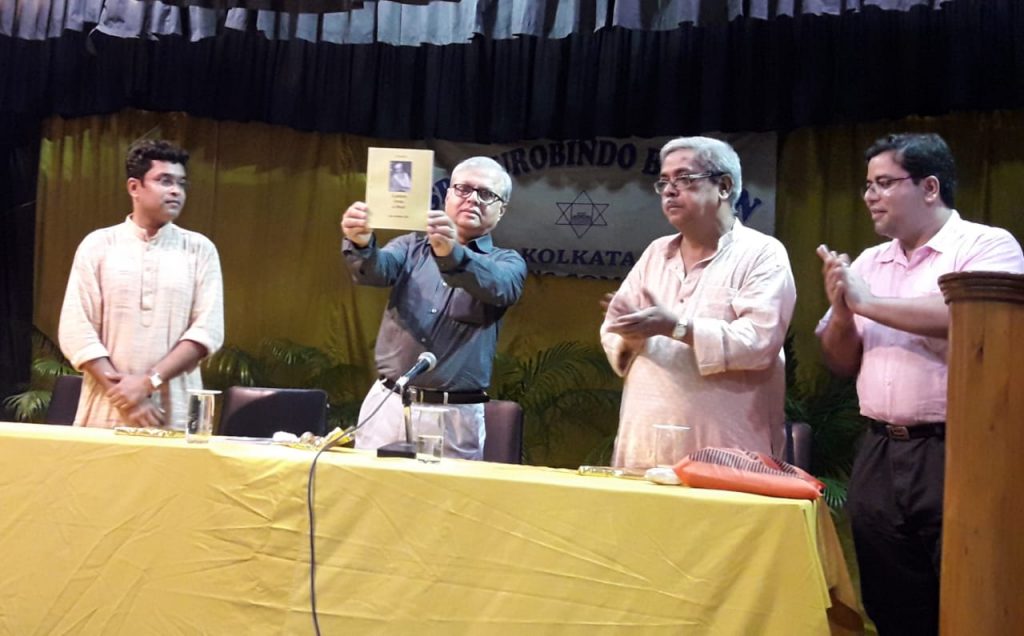

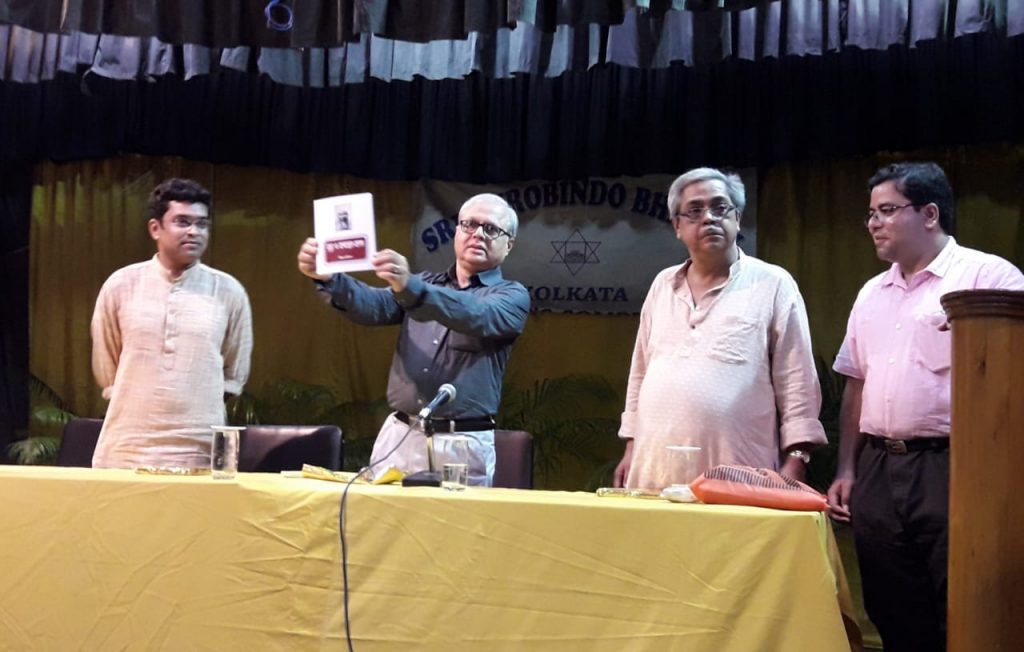

Prof. Supriyo Bhattacharya discussed the contents of the said volumes, spoke at length about their rich contents and praised the editors and the Founder of Overman Foundation for their laudable efforts in compiling the anthologies.

The Fourth “Shrimat Anirvan Memorial Oration” was attended by the stalwarts of the Aurobindonian community of West Bengal as well as distinguished members from the field of psychology and a large number of admirers and devotees of Shrimat Anirvan.


With warm regards,
Anurag Banerjee
Founder,
Overman Foundation.
Jai Ma
Wonderful.
Is Shri Gangopadhyaya related to the late pujyapad Devendra Gangopadhyaya, who was a “disciple” and most devoted to Sri Anirvan? Had the good fortune to speak to him via telephone, when he expressly encouraged the work taken up here. This was later reiterated by parampujaniya Ramadi, from almost her deathbed. The These two devoted friends of Sri Anirvan have meant the world to this writer.
Should be deeply grateful for the permission to integrate the photographs into the haimavati.anirvan.org website. Let us collect everything we have about Sri Anirvan into one place so that everyone can access whatever they wish with ease.
This writer is slowly winding down, and will need to pass on the reins to someone willing to pick up the task. In the past, a couple of people who rushed forward were eminently unsuited; hence the caution.
Among the immediate concerns:
1. How to publish haimavati-anirvan.org domain name in as many Indian and foreign languages as practical: Bangla and Hindi FIRST, then Tamil, Odiya, Gujarati, Kannada, Chinese, Japanese, Cyrillic…..
2. Efforts are under way to have Sri Anirvan’s Veda Mimansa, that already exists in an excellent Hindi version, translated into Kannada thanks to a competent Kannada vaidika who is very active on the internet site Vaidika Bharata.
We have been trying to find translators into Hindi and Odiya for the GAYATRI MANDALA. I am sure that the Sri Aurobindo community has vast and learned resources to help us. Inasmuch as Sri Anirvan clings on, as a frail adjunct to the Sri Aurobindo movement, it is only meet that some resourceful individual come forward.
Sri Anurag already has done so. This writer is the only person with absolutely NO connection to the Sri Aurobindo community, but coming to Sri Anirvan from the conservative vaidika end of the spectrum. It is interesting to watch how many different groups approach Sri Anirvan’s vision in their own way.
Specifically, one has tentatively contacted the Japanese shishya of Sri Sadhan Boiragi [ his name is given as Bairagyo, which seems incorrect in Bangla!], a rather well-known Baul singer. One has tried to impress upon that group Sri Anirvan’s “Baul” identity, one that he shared Rabindranath Thakur, whom he repeatedly calls his “Mother”. It is hoped that the astonishing fluency in colloquial Bangla present in this group will allow the translation of Sri Anirvan into Japanese and Chinese.
Sri Anirvan’s Bangla is of such beauty, such richness and depth, that only someone who knows a language like Japanese or Chinese as mother tongue can hope to do bare justice. And this group has more than one member, actively engaged in the types of sadhana conducive to the translation of Rishida’s works. One can only pray that Ma Haimavati will manifest Herself in ways that will allow such events to transpire.
In the Auroville community, Sampadananda Mishra, from Odisha, very learned in Sanskrit, surely has around him a nucleus of others from Odisha, including his immediate family. One has written to him many times, and received encouraging replies. He is a busy man, but could be of immense help finding some sympathetic people willing start translation on Sri Anirvan’s Veda Mimansa and the Gayatri Mandala into Odiya.
These two works should be our goal for any translation into any language, the first priority.
There are many highly competent Indic/Bangla experts in Russian, Serbo-Croatian, and other European languages, thanks to the Gaudiya movement. Would they be appropriate translators and would they agree to translate, is the question. One found some characters in Kolkata who informed our friends at Vaidika Bharata that they would translate Bangla to Hindi for a fee. One is a bit non-plussed but whatever Ma Haimavati wills.
Even though one feels quite confident of one’s fluency in English and some little immersion into Sri Anirvan’s works, one is unable to translate even his minor essays into either Hindi or English, is spite of being fully bi-lingual in each. Additionally, with respect to the Gayatri Mandala, there needs to be a little more than linguistic fluency at work. The late pujyapad Chabinath Mishraji certainly was divinely inspired when he composed the Hindi version of Veda Mimansa. It is an invaluable platform from which other translations can happen, since Hindi-Kannada, Hindi-Tamil, etc. translators seemingly are easier to find and less motivated by lucre than our Bangali interlocutors. So far, at least.
Now it is up to Ma Haimavati. Sri Anirvan’s stated goal was to bring HER down to this earthly plane in HER full glory, all 24 kalas instead of the meager 5 kalas that he presently perceived.
She is Parashakti, SHE IS ADYA in a manner that Sri Anirvan revelled in, that he passed on to his parampara, i.e. any who choose to imbibe what he has to offer, and that too, in full measure. His most Holy Bhuvaneshwari is not identical with that described in classical shastra but it is the same; a paradox.
Sri Anirvan is not literature, not ever. The Rksamhita through HIS eyes is tantra, i.e. sadhana shastra; he is the holy teacher and assured GUIDE. So also, every bit of his writing and his spoken word is sadhana shastra where he IS the holy teacher. Never mind that he says he is not. There IS a place, in one of his letters, where he says, Oh, you can visualize me as such and such, in so many words!! All the works are in TIFF format, so that one day, we can have some sort of electronic indexing of all his words, phrases and ideas for the entire corpus. Otherwise, the value is reduced if people cannot look up an idea and follow it though all his works. A concordance of words plus concepts unique to Sri Anirvan, e.g. AkAsha.
There is real danger of Sri Anirvan’s work and bhava dhara being lost, of becoming irrelevant. How many people today bother to read the Japasutram in its entirety? Sri Thakur Sitaramdas Omkarnathji eagerly awaited every instalment of the Japasutram, so beautifully did it match his own experiences then unfolding on the banks of the holy Narmada! The Japasutram in its original is necessary commentary to understand Sri Anirvan. Both of these holy sages are being lost in obscurity. Efforts like this current symposium and publications are beyond description. Especially bringing books back circulation, and most especially, books in English, to reach a wider audience hungry to learn more about Sri Anirvan.
Bhagavati Haimavati is all in all, so any separate word of gratitude is redundant.
Holy Parashakti, Bhagavati, Mother, what more need to be said to YOU, beloved? This is all about YOU, and You play as usual. Gagane gagane aponari shane ki khela tobo… Words merely insult YOU, words from this fool even more.
Hare Srinivasa
Shri Anirvan seemed to live an inner dimension : his intuitive perception allowed him to leave for seekers the guiding lines of a novel spiritual journey, beginning with the vision of The Life Divine. We become what we behold ? Do we behold what we become ?